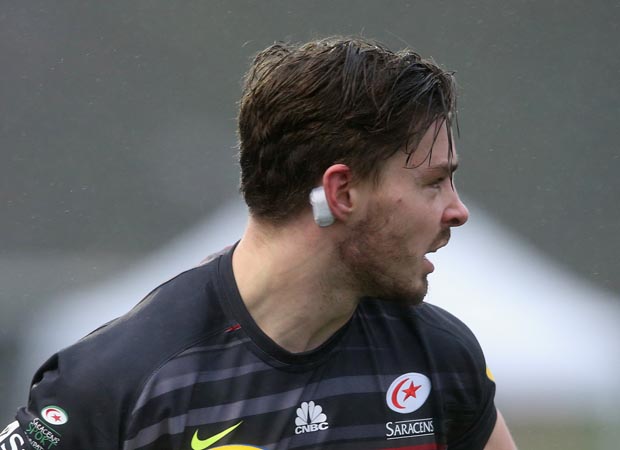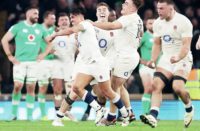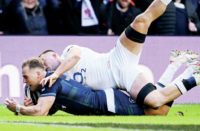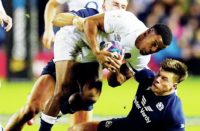
As a former Wasp it's hard to say… but here goes: Well done, Saracens, not for how you play or the ethos you espouse, but for putting players first. The concussion research programme that has been set up by Saracens is going to provide information that will have a massive impact on the whole game and could effectively turn back the clock.
The use of patches to measure the force and direction of impacts a player takes during a game could lead to major changes.
I will be very interested to see if the information can be tied to actual incidents in a game, or if it just measures the total impacts taken by a player.
Each contact would have to be identified with measures of risk apportioned to scale and angle of impact and whether in attack or defence. At present, as Saracens are the only club using the patches, the information gathered is incomplete as each contact in a game involves at least two players (one from each side) and the impacts could be markedly different for each of the players.
That isn't the only area of complication as I am sure that the scrum will also throw up some interesting results. The biggest impacts are when the front rows come together and they would probably register higher than any other during a game – but without overtly causing injury.
Then there is the question of how do you differentiate what percentage of players would naturally suffer a form of dementia as opposed to those who contract the condition as a direct result of playing the game?
As far as I know there has been no research into the numbers of dementia sufferers to see whether or not there are an unusually high percentage of cases from within the rugby playing community.
While some of the research that has taken place in NFL can be used in helping formulate a successful strategy to prevent or reduce the risks, the vast majority of information gathered will be of little or no use because of the differences in the nature of the games and also the kit worn.
NFL has a much higher head on head collision ratio than Rugby Union, particularly because of the introduction of helmets where the wearer believes he has a higher level of protection.
The impact on the brain can be accentuated by the wearing of a helmet as it can cause a more violent rebound against the skull.
It is possible that the research could form the wrong conclusions, as not all impacts cause concussion and some may have very little to do with the associated damage seen in NFL players.
Any results would have to be collected over a long period of time (possibly as long as 20 years) to see how the information is correlated with actual cases, particularly in areas where the impacts would seem to be violent.
If scrums do register some of the biggest impacts but the incidence of dementia increasing in front row forwards is not found, it follows that the scrum should be allowed to continue in pretty much the same form with a few minor adjustments that would improve engagements to reduce any potential risk.
In all probability, it will be the tackle area where most of the problems will be found and that should lead to cooperation between World Rugby (formerly IRB) and the Rugby League International Federation (RLIF) in funding a full research programme, as both sports now use similar tackling technique.
If tackling is found to be dangerous in its current form i.e. the double hit at chest high head on, we could find that the game goes back to earlier styles such as the drift defence, where players tackle the man outside them rather than in front, head on.
If these patches are improved and become more common in the game or the research proves conclusive, it could have unforeseen consequences for the game by forcing up insurance costs and possibly ending players careers.
However, in my opinion, this research should not just be the preserve of the professional game.
Currently funded by Saracens for its players, the information gathered is specifically about professional players who currently have some of the best care in the game.
This research must be taken into some junior clubs to make a full and proper study of the risks, and at academies, to find out at what age those risks become apparent.
Along with an increased use of the patches to gather information, there should be follow-up MRI scans on those who have a high number of impact related concussions and those that suffer a high number of impacts without apparent injury.
I know that some research has shown evidence that rugby could have some dementia consequence and, as I wrote before, it is vital that we have all the information possible to make informed judgments.
But unless World Rugby (IRB) and the RLIF are prepared to take over and fund this research so it can be expanded across both games, any conclusions based just on Saracens results could be flawed.


























